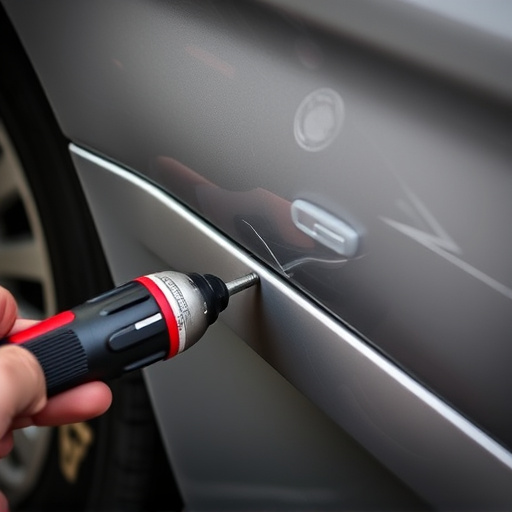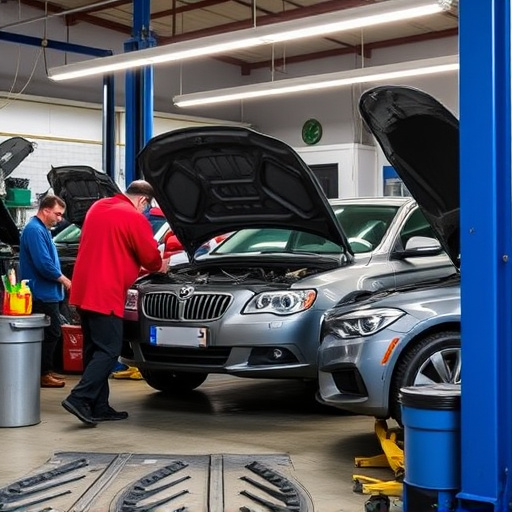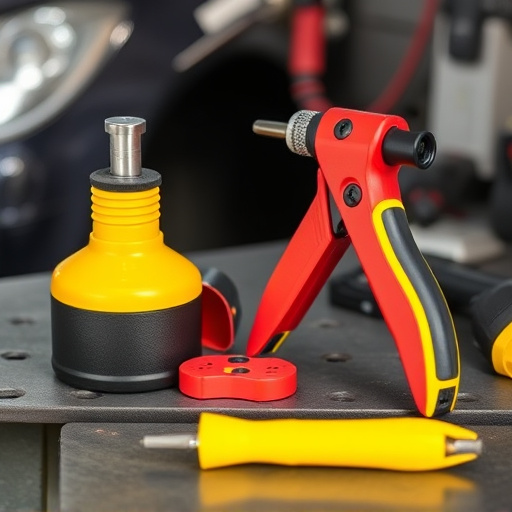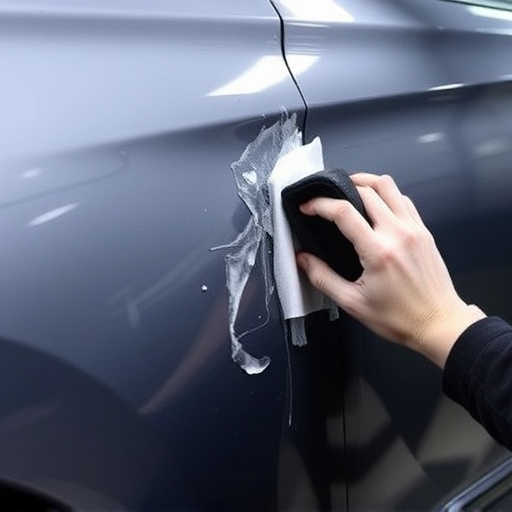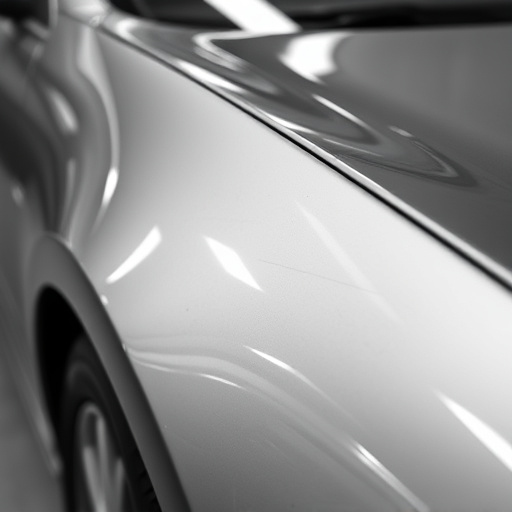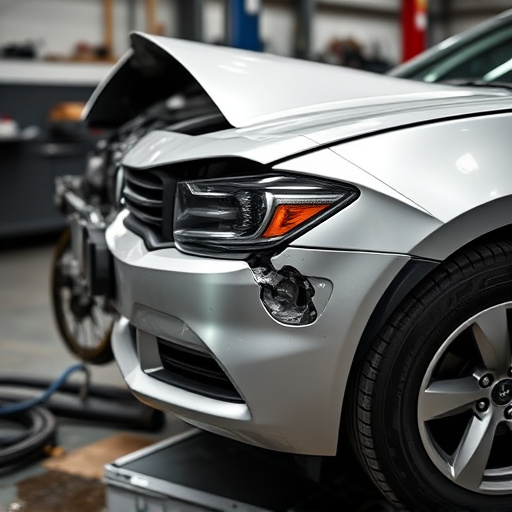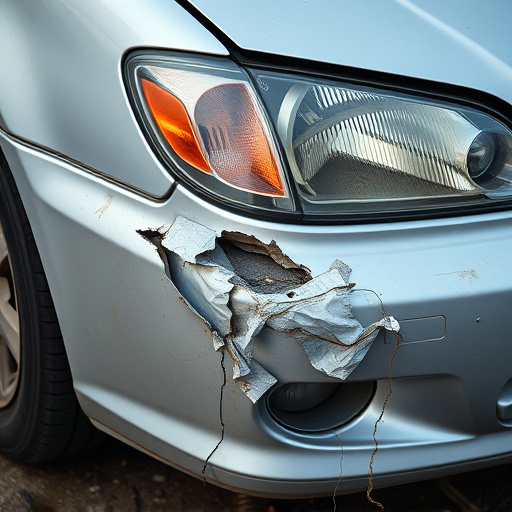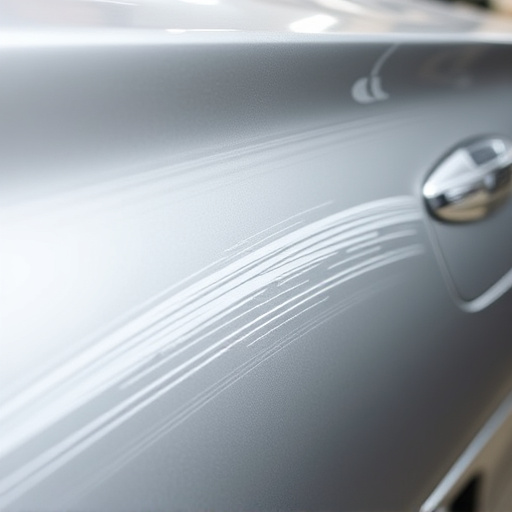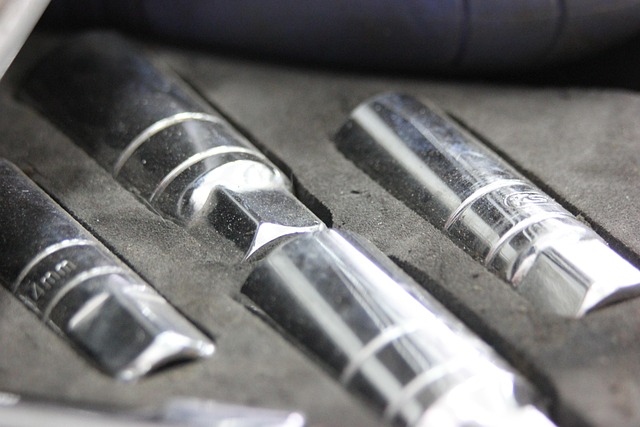Tesla's innovative use of carbon fiber in vehicle construction boosts performance and efficiency but requires careful maintenance. Early detection of cracks, chips, or impact damage is crucial for preserving structural integrity and the vehicle's renowned engineering quality. A meticulous Tesla carbon fiber repair process involves strict adherence to OEM specifications, preparation with sanding and cleaning, application of specialized adhesives and primers, precise panel alignment, and paint matching. Skilled technicians prioritize both structural soundness and aesthetic preservation through these detailed steps, ensuring optimal functionality and maintaining vehicle value within the Tesla lineup.
“Uncover the art of Tesla carbon fiber repair—a process that combines precision engineering with meticulous craftsmanship. This guide delves into the intricate world of restoring Tesla’s iconic carbon fiber design, addressing its unique vulnerabilities. Learn how adhering to Tesla’s engineering specifications ensures a durable fix while maintaining the vehicle’s aesthetic appeal. Discover expert tips for achieving a seamless, long-lasting restoration, empowering car enthusiasts to master the craft of Tesla carbon fiber repair.”
- Understanding Tesla's Carbon Fiber Design and Its Vulnerabilities
- The Repair Process: Adhering to Tesla Engineering Specifications
- Ensuring Longevity and Aesthetics: Tips for Successful Carbon Fiber Restoration
Understanding Tesla's Carbon Fiber Design and Its Vulnerabilities

Tesla’s innovative use of carbon fiber in their vehicle construction has revolutionized the automotive industry. This lightweight and incredibly strong material plays a crucial role in achieving optimal performance and efficiency, hallmarks of Tesla engineering. However, understanding that carbon fiber is not invulnerable is key to efficient Tesla carbon fiber repair when damages occur.
Just like any other material, carbon fiber can be susceptible to cracks, chips, and other forms of damage due to various factors such as impact, road debris, or manufacturing defects. In a vehicle body shop, auto glass repair might even lead to carbon fiber damage if not handled carefully. Recognizing these vulnerabilities early on is crucial for efficient Tesla carbon fiber repair, ensuring that the vehicle retains its structural integrity and performance capabilities.
The Repair Process: Adhering to Tesla Engineering Specifications

When conducting a Tesla carbon fiber repair, adhering to Tesla Engineering Specifications is paramount. This involves using original equipment manufacturer (OEM) parts and following precise guidelines to maintain the vehicle’s structural integrity and aesthetic appeal. The process begins with meticulous preparation, where damaged areas are meticulously sanded and cleaned to ensure a clean surface for application.
Subsequent steps involve applying specialized adhesives and primers designed by Tesla to facilitate bonding between the carbon fiber components and the existing bodywork. Every detail, from panel alignment to paint matching, is crucial. Skilled technicians use their expertise to match the unique specifications of each vehicle, ensuring that the repair seamlessly integrates with the overall design and performance characteristics of the Tesla. This meticulous approach guarantees that the repaired area not only looks original but also functions optimally, preserving the vehicle’s value within the prestigious Tesla lineup.
Ensuring Longevity and Aesthetics: Tips for Successful Carbon Fiber Restoration

When undertaking Tesla carbon fiber repair, achieving both longevity and maintaining the vehicle’s aesthetic appeal is paramount. Carbon fiber, known for its strength and lightweight properties, requires meticulous care during the restoration process to ensure it retains its structural integrity and visual allure. The first step is preparing the damaged area thoroughly; this involves careful sandblasting or using specialized tools to remove any debris or loose carbon fiber without causing further damage. A clean, smooth surface is crucial for successful bonding later.
After preparation, applying a high-quality primer designed specifically for carbon fiber repair is essential. This step creates a strong base for the subsequent coat of paint, ensuring long-lasting adhesion and preventing future delamination. It’s important to follow Tesla’s engineering specifications closely when choosing the right materials and techniques for the repair process. Utilizing body shop services with experience in carbon fiber restoration can significantly enhance the outcome, as professionals have access to specialized tools and know-how to achieve both structural soundness and a factory-like finish that complements the car’s overall aesthetics.
Tesla carbon fiber repair, when done correctly using Tesla engineering specifications, can restore not only the structural integrity of your vehicle but also its aesthetic appeal. By understanding the unique design and vulnerabilities of Tesla’s carbon fiber body panels, following precise repair processes, and implementing tips for longevity, you can ensure a high-quality restoration that matches the original standards set by Tesla. This meticulous approach to Tesla carbon fiber repair guarantees both performance and beauty for years to come.
